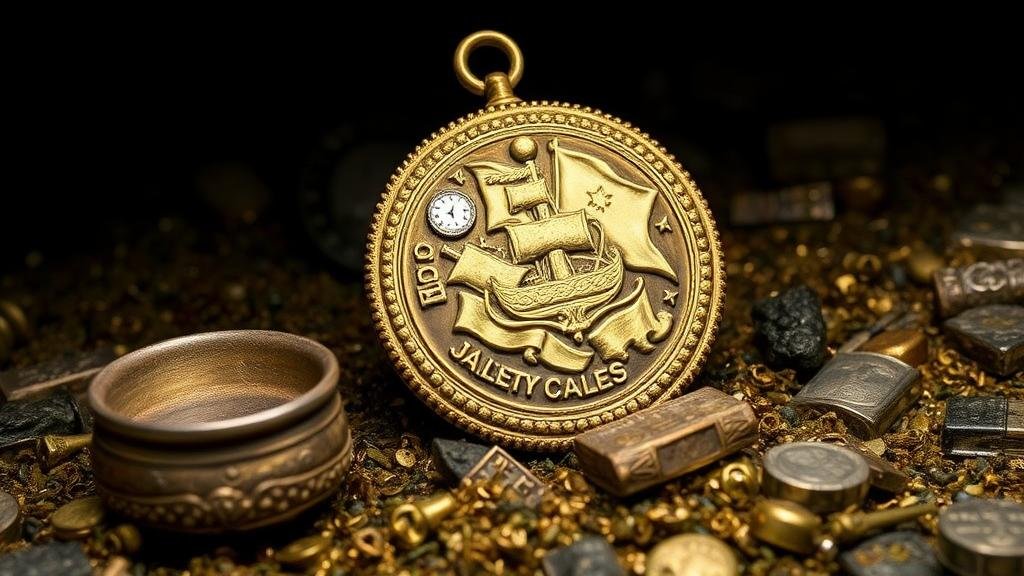Recovering Sunken Gold and Silver Artifacts From Historic Ferry Routes
Recovering Sunken Gold and Silver Artifacts From Historic Ferry Routes
The recovery of sunken Gold and Silver artifacts from historic ferry routes is an intricate field that blends archaeology, history, and marine engineering. This practice not only aims to recover valuable metals but also seeks to uncover rich narratives of a bygone era, shedding light on commerce, transportation, and culture during a significant period in history.
Historical Context of Ferry Routes
Ferry routes have historically played an essential role in the transportation of goods and passengers. During the 18th and 19th centuries, ferries were crucial for trade and movement across waterways. Many ferries operated without the benefit of modern navigation or weather predictions, making them prone to accidents. Vessels frequently met with misfortune, leading to the loss of cargo, including precious metals.
For example, the Gold Rush in the United States resulted in an uptick in ferry operations across rivers and lakes, as prospectors fled to new territories. Many of these ferries, laden with gold and silver, sank, leaving their cargo to rest on the seabed. Historical accounts suggest that more than 50 documented sinkings occurred on major routes in California alone, emphasizing the scale of potential recovery.
Techniques for Artifact Recovery
The methodologies employed to recover artifacts from sunken vessels encompass a range of techniques, primarily categorized into exploratory and recovery methods. These techniques have advanced significantly over the years due to technological innovations in marine archaeology.
- Sonar Technology: The use of sonar allows researchers to map the underwater landscape, identifying potential sites where artifacts may be located. Multibeam sonar systems provide high-resolution images of the seabed, enabling archaeologists to pinpoint shipwrecks with accuracy.
- Diving Operations: Once sites are identified, skilled divers are deployed to assess and recover artifacts. e divers are trained in archaeological techniques to ensure that recovery efforts are systematic and preserve the integrity of the findings.
- Remote Operated Vehicles (ROVs): ROVs equipped with cameras and robotic arms are revolutionizing underwater recovery. They allow for the retrieval of artifacts from deep waters without putting divers at risk, making it possible to explore more hazardous locations.
Legal and Ethical Considerations
Recovering artifacts from historic ferry routes raises critical legal and ethical questions. Many countries have strict regulations governing underwater archaeology, often requiring permits and adherence to conservation protocols. UNESCO Convention on the Means of Prohibiting and Preventing the Illicit Import, Export, and Transfer of Ownership of Cultural Property serves as a guiding framework in these endeavors.
The ethical consideration also extends to the treatment of artifacts once recovered. Preservation specialists often face dilemmas regarding whether to display the artifacts in museums or return them to their original points of origin. This debate highlights the importance of respecting both the archaeological context and the cultural heritage associated with the artifacts.
Case Studies of Notable Recoveries
Several notable recoveries from sunken ferry routes illustrate the potential for historical revelations. One of the most remarkable cases is the recovery of artifacts from the ferry “SS General Slocum,†which sank in the East River in 1904. The recovery team uncovered gold coins, jewelry, and personal items belonging to the passengers, providing invaluable insights into the lives of immigrants in early 20th-century New York.
Another significant case occurred in Lake Michigan, where divers recovered silver coins and gold ingots from the “Lady Elgin,†a ferry that sank in 1860. The artifacts not only held monetary value but were emblematic of the vast maritime commerce that existed in the Great Lakes region. recovery was celebrated for its contributions to understanding regional history and prompted further archaeological investigations into other sunken vessels.
Real-World Applications and Takeaways
The pursuit of sunken gold and silver artifacts from historic ferry routes has broader implications beyond mere recovery. It enables educators, historians, and archaeologists to teach future generations about the past through tangible artifacts. Plus, it fuels local economies through tourism and educational programming at maritime museums.
To wrap up, the recovery of sunken gold and silver artifacts from historic ferry routes stands at the intersection of technology, history, and ethics. Engaging in this field not only paves the way for significant monetary and academic advances but also contributes to a deeper understanding of our maritime heritage. Future recovery efforts would benefit from balancing innovation, legal frameworks, and a respect for the stories these artifacts tell.



